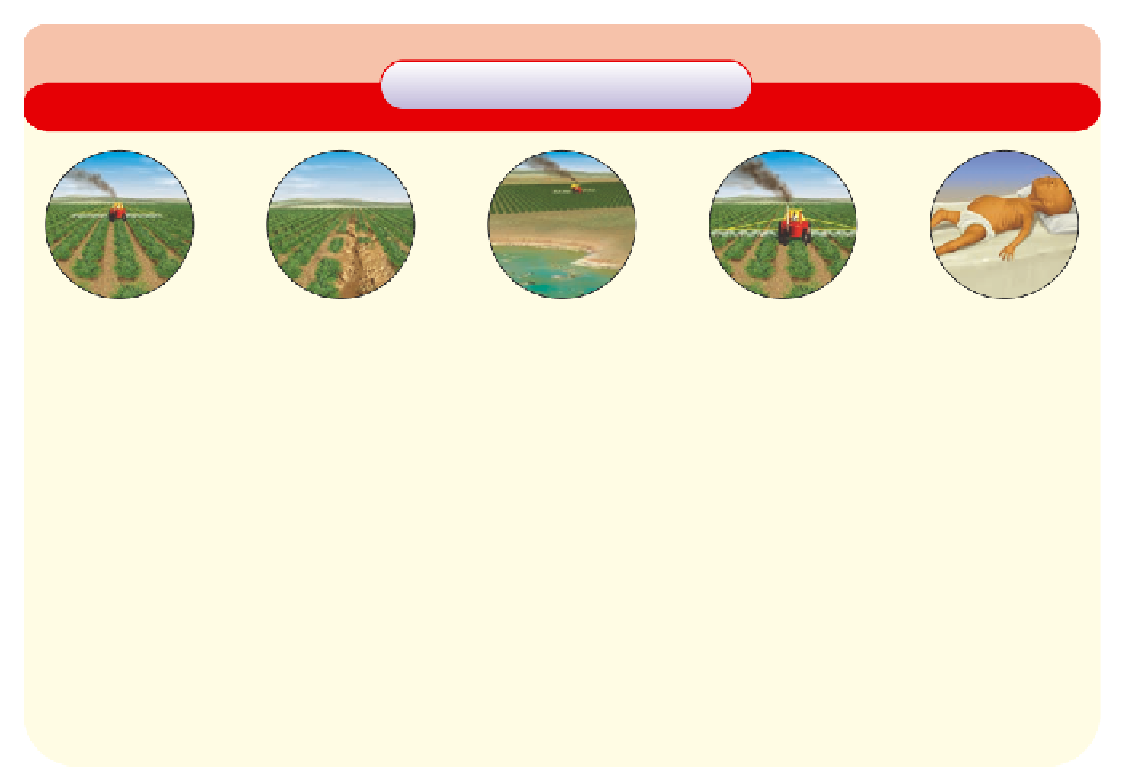Environmental Engineering Reference
In-Depth Information
Natural Capital Degradation
Food Production
Biodiversity Loss
Soil
Water
Air Pollution
Human Health
Loss and degradation
of habitat from
clearing grasslands
and forests and
draining wetlands
Erosion
Water waste
Greenhouse gas
emissions from
fossil fuel use
Nitrates in drinking
water
Loss of fertility
Aquifer depletion
Pesticide residues
in drinking water,
food, and air
Salinization
Increased runoff and flooding
from land cleared to grow
crops
Other air pollutants
from fossil fuel use
Fish kills from
pesticide runoff
Waterlogging
Greenhouse gas
emissions of nitrous
oxide from use of
inorganic fertilizers
Contamination of
drinking and
swimming water
with disease
organisms from
livestock wastes
Desertification
Sediment pollution from erosion
Killing of wild
predators to protect
livestock
Fish kills from pesticide runoff
Surface and groundwater
pollution from pesticides and
fertilizers
Belching of the
greenhouse gas
methane into the
atmosphere by
cattle
Loss of genetic
diversity from
replacing thousands
of wild crop strains
with a few
monoculture strains
Bacterial
contamination of
meat
Overfertilization of lakes and
slow-moving rivers from runoff
of nitrates and phosphates from
fertilizers, livestock wastes, and
food processing wastes
Pollution from
pesticide sprays
Figure 10-18
Natural capital degradation:
major environmental effects of food production. According to UN
studies, land degradation reduced cumulative food production worldwide by 13% on cropland and 4% on
pastureland between 1950 and 2000.
by soil erosion, salt buildup, and chemical pollution,
and 17% has been seriously degraded. Such environ-
mental factors may limit food production in India and
China, the world's two most populous countries.
Traditional crossbreeding is a slow process, typi-
cally taking 15 years or more to produce a commer-
cially valuable new variety, and it can combine traits
only from species that are close to one another geneti-
cally. It also provides varieties that remain useful for
only 5-10 years before pests and diseases reduce their
effectiveness.
Today, scientists are creating a
third green revolu-
tion
—actually a
gene revolution
—by using
genetic engi-
neering
to develop genetically improved strains of
crops and livestock animals. This technology involves
splicing a gene from one species and transplanting it
into the DNA of another species (Figure 4-11, p. 75).
Compared to traditional crossbreeding, gene splicing
takes about half as long to develop a new crop, cuts
costs, and allows the insertion of genes from almost
any other organism into crop cells.
Ready or not, the world is entering the
age of ge-
netic engineering.
More than two-thirds of the food
products on U.S. supermarket shelves now contain
some form of genetically engineered crops, and the
proportion is increasing rapidly.
10-5 INCREASING FOOD
PRODUCTION
Science: Traditional Crossbreeding
and Genetic Engineering
We can increase crop yields by using crossbreeding to
mix the genes of similar types of organism and by
using genetic engineering to mix the genes of different
organisms.
For centuries, farmers and scientists have used
cross-
breeding
to develop genetically improved varieties of
crop strains. Such selective breeding has yielded
amazing results. Ancient ears of corn were about the
size of your little finger and wild tomatoes were once
the size of a grape.


